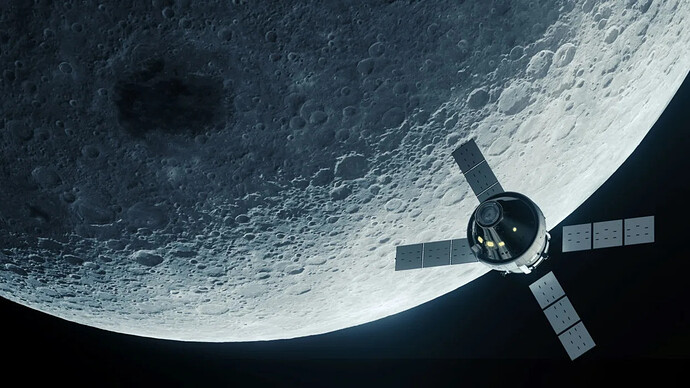Excuses, excuses…Must be trying to quell those pesky conspiracy theories.
Why is it so hard to send humans back to the moon?
Why is it so hard to send humans back to the moon?
Paul Sutter
Sun, April 21, 2024 at 8:00 AM CDT·4 min read
The orion spacecraft above the moon.
Between 1969 and 1972, the Apollo missions sent a total of a dozen astronauts to the surface of the moon — and that was before the explosion of modern technology. So why does it seem like our current efforts, as embodied by NASA’s Artemis program, are so slow, halting and complex?
There isn’t one easy answer, but it comes down to money, politics and priorities.
Let’s start with the money. Yes, the Apollo missions were enormously successful — and enormously expensive. At its peak, NASA was consuming around 5% of the entire federal budget, and more than half of that was devoted to the Apollo program. Accounting for inflation, the entire Apollo program would cost over $260 billion in today’s dollars. If you include project Gemini and the robotic lunar program, which were necessary precursors to Apollo, that figure reaches over $280 billion.
Related: Astronauts won’t walk on the moon until 2026 after NASA delays next 2 Artemis missions
In comparison, today NASA commands less than half a percent of the total federal budget, with a much broader range of priorities and directives. Over the past decade, NASA has spent roughly $90 billion on the Artemis program. Naturally, with less money going to a new moon landing, we’re likely to make slower progress, even with advancements in technology.
Closely tied to the financial realities are the political realities. In the 1960s, America was in the midst of the space race, a competition with the Soviet Union to achieve as many firsts in space, especially landing humans on the moon. The public was on board and energized by this idea, as were lawmakers who directed NASA’s expansive budget.
That kind of spending, however, was deeply unsustainable. As soon as America “won,” the public quickly lost interest and NASA funding tumbled. There simply isn’t the political or public will to spend that amount of money for a second shot at the moon.
This combination of lower political will and fewer financial resources forced NASA to make some critical decisions in the late 1990s and early 2000s — decisions that still affect Artemis today.
two massive side booster spew yellow orange fire lifting the core stage of a rocket as two main engines also ignite
Namely, as the space shuttle program was winding down, NASA administrators didn’t know what to do with the industrial capabilities and partnerships that led to the shuttle. They decided to keep that infrastructure in place by reusing many shuttle parts, especially the engines, and folding them into the Artemis design.
On the other hand, one could argue that it was the right call to keep that infrastructure in place and aerospace engineers employed, because it was exactly that technical base that we needed to launch the recent renaissance in private spaceflight companies — but that’s a separate discussion.
Lastly, the modern Artemis concept has a much different set of priorities than the Apollo missions did. For example, our risk tolerance is much, much lower than it was in the 1960s. The Apollo missions were outright dangerous, with a significant chance of failure. Indeed, several missions did encounter disasters: the Apollo 1 fire that killed three astronauts, an engine shutdown during Apollo 6, and the near-fatal design flaw that nearly led to the deaths of the Apollo 13 astronauts. NASA, lawmakers and the public are not willing to take on that level of risk again, especially after the Challenger and Columbia disasters.
RELATED STORIES:
—Return to the moon: The race we have to win (again)
— Return to flight: NASA’s Artemis 1 mission to launch using space shuttle-used parts
— NASA beefing up SLS moon rocket for its Artemis program
The Apollo missions expended enormous sums of money to send astronauts to the lunar surface for a few dozen hours. They went, collected some samples, set up some simple experiments, and left.
The Artemis missions are designed around a completely different set of goals. For one, the astronauts will spend up to a week on the lunar surface, which requires more food, water, fuel and scientific instruments. Second, while the Apollo missions treated science as an afterthought — the main goal was to beat the Soviets — scientific investigation will take center stage in the Artemis program, meaning it entails a longer, more complex mission design.
Lastly, the intent of the Artemis program isn’t just to return humans to the moon; it’s to begin building the infrastructure to maintain a permanent human presence there. Everything from orbiting refueling depots to site selection for future colonies falls under the umbrella of the Artemis project. It is a much more involved program because it provides the framework for achieving dreams for generations to come.



